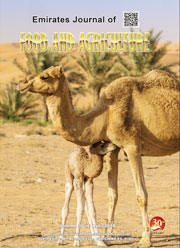THERMOPHYSIOLOGICAL STUDY IN LACTATING AND DRY CAMELS (CAMEL US DROMEDARIES) UNDER SUMMER CONDITIONS
DOI:
https://doi.org/10.9755/ejfa.v25i4.15500Keywords:
Dromedary camel, Infrared thermography, Lactation, ThermoregulationAbstract
A comparative study on thermophysiological responses of 24 lactating and non-lactating (dry) camels maintained under natural summer conditions was carried out with 2 Arabian native breeds. Study parameters (meteorology, thermophysiology, infrared thermography) were measured in both breeds at the evening milking (17:00h) throughout 3 consecutive days. It appears evident that lactating camels are more thermally labile than their dry counterparts under such environmental conditions. This fact was proven by higher body temperatures of lactating camels than their dry counterparts (rectal temperature: 38.01 ± 0.07°C VS 37.80 ± 0.06°C and vaginal temperature: 38.20 ± 0.08°C VS 37.79 ± 0.07°C, P< 0.05). Additionally, this was further emphasized by the noticeable increases of several thermophysiological parameters in lactating camels including their respiratory rate (6.57%), heart rate (9.36%), as well as body (11.06%), udder (4.74%), teat (5.52%), and milk vein (4.51%) surface temperatures. In conclusion, lactating camels expressed higher thermophysiological responses over dry camels. Infra-red thermography can be a suitable tool for non-invasive method that detects surface heat radiation in dromedary camels.










 .
. 